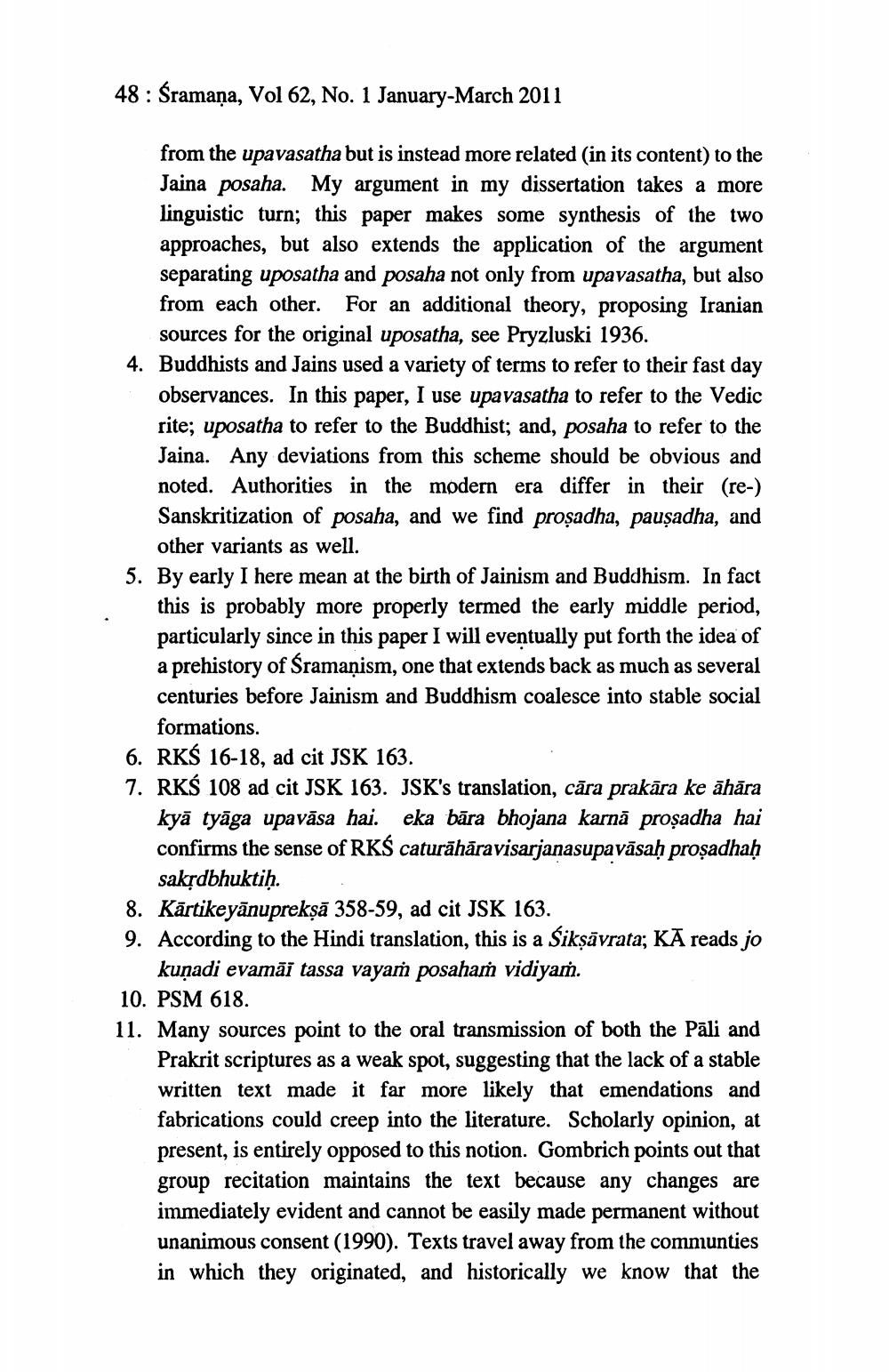________________
48: Śramana, Vol 62, No. 1 January-March 2011
from the upavasatha but is instead more related (in its content) to the Jaina posaha. My argument in my dissertation takes a more linguistic turn; this paper makes some synthesis of the two approaches, but also extends the application of the argument separating uposatha and posaha not only from upavasatha, but also from each other. For an additional theory, proposing Iranian sources for the original uposatha, see Pryzluski 1936.
4. Buddhists and Jains used a variety of terms to refer to their fast day observances. In this paper, I use upavasatha to refer to the Vedic rite; uposatha to refer to the Buddhist; and, posaha to refer to the Jaina. Any deviations from this scheme should be obvious and noted. Authorities in the modern era differ in their (re-) Sanskritization of posaha, and we find proṣadha, pauṣadha, and other variants as well.
5. By early I here mean at the birth of Jainism and Buddhism. In fact this is probably more properly termed the early middle period, particularly since in this paper I will eventually put forth the idea of a prehistory of Śramanism, one that extends back as much as several
centuries before Jainism and Buddhism coalesce into stable social formations.
6. RKS 16-18, ad cit JSK 163.
7. RKS 108 ad cit JSK 163. JSK's translation, cara prakāra ke āhāra kyä tyāga upavāsa hai. eka bāra bhojana karnā proṣadha hai confirms the sense of RKS caturāhāravisarjanasupavāsaḥ proṣadhaḥ sakṛdbhuktiḥ.
8. Kartikeyanuprekṣā 358-59, ad cit JSK 163.
9. According to the Hindi translation, this is a Šikṣāvrata, KĀ reads jo kuṇadi evamãi tassa vayaṁ posahaṁ vidiyam.
10. PSM 618.
11. Many sources point to the oral transmission of both the Pāli and Prakrit scriptures as a weak spot, suggesting that the lack of a stable written text made it far more likely that emendations and fabrications could creep into the literature. Scholarly opinion, at present, is entirely opposed to this notion. Gombrich points out that group recitation maintains the text because any changes are immediately evident and cannot be easily made permanent without unanimous consent (1990). Texts travel away from the communties in which they originated, and historically we know that the




